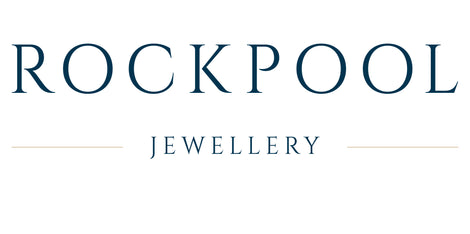Diamonds are an ever popular choice for jewellery. But do you know what to look for in a diamond?
There are now more choices than your traditional mined diamond with the growth of the lab grown diamond market but that is for another time.
Whether lab grown or natural diamonds, you should consider the 4 C's:
Colour
Clarity
Cut
Carat
Choosing a diamond is personal, depending on what features of a diamond you prefer or value. I hope this will help to explain a little about the key features to look for when choosing a stone for your jewellery or purchasing a piece which includes diamonds:
Colour
Diamonds have a colour scale. The most sought after colour of diamond is 'D', this is the code used to indicate a colourless diamond, these are the rarest kind and command the highest price point. The colour scale goes all the way to Z, at Z on the scale you will find that these diamonds have a yellow or brownish tinge to them.
D, E and F are the colours that fall within the'colourless' range of diamonds and the differences bewteen them cant be identified by eye. Diamonds in the range H - G are also popular as they are still of good colour but a more affordable price point.
Clarity
Clarity refers to the 'cleanness' of the stone. Here diamonds are rated from IF (internally flawless), meaning there are no identifiable inclusions (impurities) within the stone, to I1 where the inclusion are visible to the eye.
The full ratings are:
IF - internally flawless
VVS1 - very very slightly included 1
VVS2 - very very slightly included 2
VS1 - very slightly included 1
VS2 - very slightly included 2
SI1 - slightly included 1
SI2 - slightly included 2
I1 - Included
The differences in ratings are linked to the level of magnification needed to see the imperfections or how 'clean' the stone is when viewed by eye.
Internally flawless natural diamonds are rare and therefore a much higher price than those lower on the scale
Cut
Cut is important to determine how well the diamond will sparkle. If the diamond is not cut well it does not make the most of its other characteristics and can also make a stone look smaller than its actual carat weight
Carat
This leads us nicely onto carat which determines the size of the stone. However, a 2 carat stone is not double the size of a 1 carat stone, and 0.5 carat is not half the size of a one carat. The more carats you want in one stone for that special engagement ring or cocktail ring, the higher the price. If there are rings that have multiple diamonds, for example, a central stone surrounded by a halo of other diamonds, you may see total carat weight used in the description of the piece. Normally the central stone carat will be detailed and then the total carat weight of the other stones totaled, the two equaling the total carat weight of the item of jewellery.
I could say a lot more on each of these and its a fascinating subject so if you want to know more please get in touch!
But whats best?
This all depends on the look you want for your piece of jewellery and your budget. If you want a large diamond but arent too bothered about the colour of the stone, this can mean that there are more options for your budget. But if you want higher waulity colour and high clarity it may mean settling for a smaller carat size, depending on your budget,
Its personal choice and its your jewellery so as long as you like it, thats all that matters
I hope this little blog post has been interesting for you and look out for more coming soon on Lab Grown vs Natural Diamonds and also more about the recycled stones that I use in my designs
Jo x


